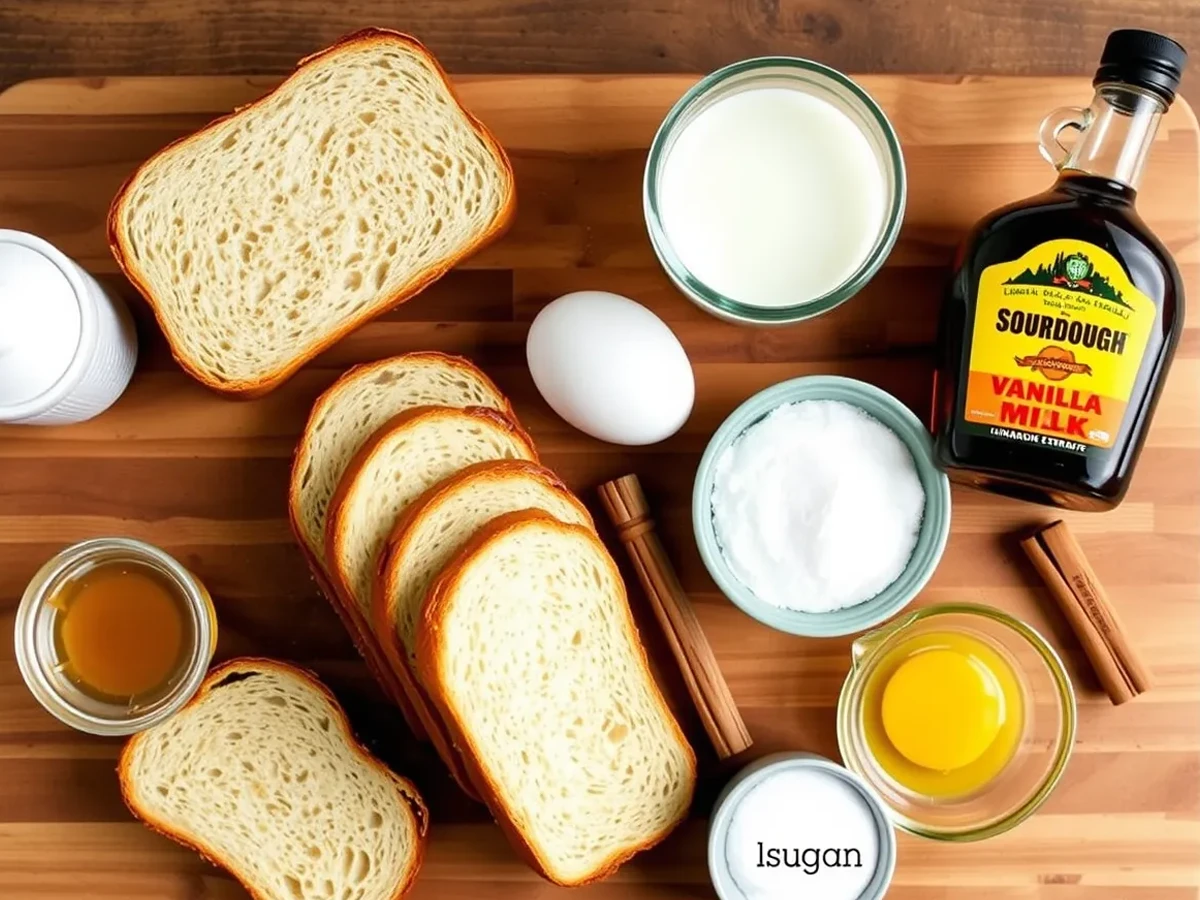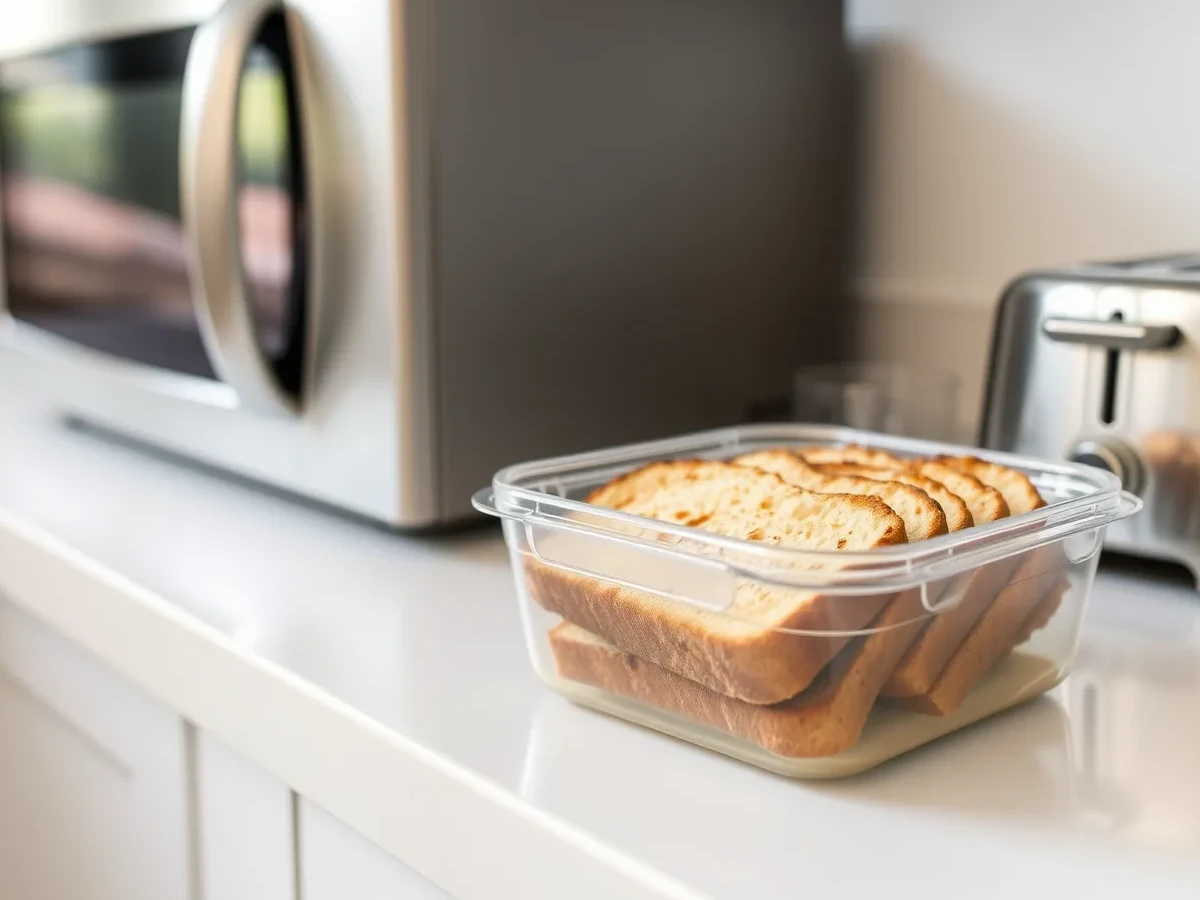Imagine waking up on a leisurely weekend morning, the smell of butter sizzling in a pan and the comforting aroma of sweet spices filling the air. On the plate, you’re greeted by thick, golden slices of sourdough bread, their edges perfectly crisp and the centers soft and custard-like. This is the magic of sourdough French toast—a breakfast classic elevated to perfection.
French toast has always been a go-to for turning simple ingredients into something truly special. But when sourdough bread enters the equation, it adds an entirely new layer of complexity and flavor. With its slightly tangy taste and hearty texture, sourdough is the ideal bread for French toast. It holds up beautifully to the rich egg mixture, absorbing just the right amount without falling apart. The result? A dish that’s indulgent yet balanced, with a hint of tang that complements its sweet and savory elements.
Sourdough French toast isn’t just about taste; it’s also versatile. Whether you’re serving it as a quick weekday breakfast or an elegant brunch centerpiece, this dish shines in any setting. Top it with fresh berries for a refreshing twist, slather it with peanut butter for a protein-packed start to the day, or drizzle it with maple syrup for classic comfort. The possibilities are endless, and that’s part of its charm.
If you’re wondering whether this recipe is for you, the answer is yes. Sourdough French toast is simple enough for beginners yet sophisticated enough to impress guests. Plus, it’s a fantastic way to use up leftover sourdough bread. Ready to transform your breakfast game? Let’s dive into this sourdough French toast recipe and discover why it’s a must-try for every home cook.
- Recipe Card
- Nutrition Information
- Why You’ll Love This Recipe
- Key Ingredients and Substitutions
- How to Make Sourdough French Toast (Step-by-Step)
- Expert Tips for Success
- Variations and Customizations
- Storage and Reheating Instructions
- Serving Suggestions
- Frequently Asked Questions (FAQs)
- Related Recipes
- Health Benefits
- The Perfect Time to Enjoy
- The History of French Toast: A Global Favorite
- The Science Behind Sourdough
- Seasonal Twists for Every Occasion
- Blend It Your Way: Equipment Recommendations
- Conclusion
Recipe Card
Sourdough French Toast
A delicious twist on the classic French toast made with tangy sourdough bread.
- Prep Time: 10 minutes
- Cook Time: 15 minutes
- Total Time: 25 minutes
- Servings: 4
- Calories: 320
Ingredients

- 8 slices of sourdough bread
- 3 large eggs
- 1 cup whole milk (or dairy-free alternative)
- 2 tablespoons granulated sugar
- 1 teaspoon vanilla extract
- ½ teaspoon cinnamon
- A pinch of salt
- Butter or oil for frying
Instructions

- In a shallow bowl, whisk together eggs, milk, sugar, vanilla extract, cinnamon, and salt.
- Heat a non-stick skillet or griddle over medium heat and lightly grease with butter or oil.
- Dip each slice of sourdough bread into the egg mixture, ensuring it’s evenly coated on both sides.
- Place the soaked bread onto the skillet and cook for 2-3 minutes on each side, or until golden brown.
- Repeat with remaining slices, adding more butter or oil as needed.
- Serve warm with your favorite toppings, such as maple syrup, fresh berries, or powdered sugar.
Notes
- For extra flavor, let the bread soak in the mixture for a few seconds longer. Use day-old sourdough for the best texture.
Nutrition Information
| Nutritional Info | Per Serving |
|---|---|
| Serving Size | 2 slices |
| Calories | 320 |
| Sugar | 8g |
| Sodium | 450mg |
| Fat | 12g |
| Saturated Fat | 6g |
| Unsaturated Fat | 4g |
| Trans Fat | 0g |
| Carbohydrates | 42g |
| Fiber | 3g |
| Protein | 10g |
| Cholesterol | 95mg |
Why You’ll Love This Recipe
- Tangy Flavor Twist: The sourdough bread adds a unique, slightly tangy flavor that complements the sweetness perfectly.
- Simple Ingredients: Crafted using pantry staples you likely already have on hand.
- Quick and Easy: Ready in just 25 minutes, making it ideal for busy mornings.
- Versatile: Works great with various toppings and can be adjusted to dietary preferences.
- Perfect Texture: Achieves a crisp exterior and soft, custardy center every time.
Key Ingredients and Substitutions
- Sourdough Bread: Opt for slightly stale sourdough as it soaks up the custard better. Regular bread or brioche can be substituted for a different flavor profile.
- Milk: Use whole milk for richness or replace it with almond, oat, or soy milk for a dairy-free option.
- Eggs: Essential for binding and creating that creamy texture.
- Cinnamon and Vanilla Extract: These enhance the overall flavor but can be adjusted or swapped for nutmeg or almond extract for variation.
How to Make Sourdough French Toast (Step-by-Step)
- Prepare the Custard Mixture: Whisk together eggs, milk, sugar, vanilla extract, cinnamon, and a pinch of salt in a wide bowl.
- Heat the Skillet: Preheat a non-stick skillet over medium heat and grease it lightly with butter or oil.
- Soak the Bread: Dip each slice of sourdough into the egg mixture, ensuring it’s fully coated but not overly soggy.
- Cook to Perfection: Place the soaked bread onto the hot skillet. Cook for 2-3 minutes on each side until golden brown. Adjust the heat as necessary to prevent burning.
- Serve: Transfer to a plate and serve immediately with your favorite toppings.
Expert Tips for Success
- Use Day-Old Bread: Slightly stale sourdough works best as it absorbs the custard without becoming mushy.
- Don’t Skip the Cinnamon: This spice enhances the flavor and gives the toast a warm, comforting aroma.
- Maintain Medium Heat: Too high a heat can burn the exterior before the inside is fully cooked.
- Make It Ahead: Prepare the custard mixture in advance and refrigerate it for up to 12 hours.
Variations and Customizations

- Gluten-Free: Use gluten-free sourdough bread.
- Dairy-Free: Swap out whole milk with almond, soy, or oat milk.
- Savory Twist: Skip the sugar and cinnamon, and serve with toppings like avocado or a poached egg.
- Nutty Delight: Add crushed pistachios or almonds on top for extra crunch.
Storage and Reheating Instructions

- Refrigeration: Store leftover sourdough French toast in an airtight container in the fridge for up to 3 days.
- Freezing: Freeze slices in a single layer on a baking sheet, then transfer them to a freezer bag. They’ll keep for up to 2 months.
- Reheating: Reheat in a toaster oven or skillet over low heat for a fresh-from-the-griddle taste.
Serving Suggestions

- Classic: Serve with maple syrup and powdered sugar.
- Fruit Lovers: Top with fresh berries, banana slices, or a fruit compote.
- Indulgent: Add whipped cream, chocolate chips, or a drizzle of caramel sauce.
- Savory Pairings: Pair with crispy bacon or scrambled eggs for a balanced breakfast.
Frequently Asked Questions (FAQs)
What makes sourdough bread ideal for French toast?
Sourdough bread’s tangy flavor and sturdy texture make it perfect for soaking up the custard mixture without falling apart.
Can I use stale sourdough bread for this recipe?
Yes! In fact, day-old or slightly stale sourdough bread is ideal as it absorbs the custard better without becoming too soggy.
What toppings pair best with sourdough French toast?
Classic toppings like maple syrup and powdered sugar work beautifully, but you can also add fresh fruits, whipped cream, or nuts.
How can I make a dairy-free version of sourdough French toast?
Replace whole milk with a non-dairy alternative like almond, soy, or oat milk and use dairy-free butter or oil for frying.
Can sourdough French toast be made ahead of time and reheated?
Absolutely! Make the French toast ahead of time and store it in the refrigerator or freezer. Reheat it in a skillet or toaster oven before serving.
Related Recipes
Health Benefits
Sourdough bread is packed with probiotics that promote a healthy gut. Paired with eggs and milk, this dish provides a good balance of protein, carbohydrates, and essential nutrients, making it a wholesome breakfast option.
The Perfect Time to Enjoy
Sourdough French toast is perfect for leisurely weekend brunches, holiday breakfasts, or even as a comforting dessert after dinner. Its versatility ensures it can fit into any mealtime occasion.
The History of French Toast: A Global Favorite
French toast, often associated with indulgent breakfasts, has a rich history that spans centuries and continents. Known by various names—pain perdu in France, armer ritter in Germany, and torrija in Spain—this dish has long been a solution for repurposing stale bread. Its origins date back to Ancient Rome, where cooks dipped bread in a mixture of milk and eggs before frying it in oil. Over time, each culture added its twist to the recipe, incorporating local ingredients and flavors.
Sourdough French toast, with its tangy twist, elevates this age-old tradition, demonstrating how a single ingredient can transform a beloved classic. Using sourdough bread not only honors the dish’s humble beginnings but also highlights how traditional recipes can adapt to modern tastes.
The Science Behind Sourdough
Sourdough bread isn’t just delicious; it’s a marvel of natural science. Unlike commercially produced bread, which relies on quick-rise yeast, sourdough is made through fermentation. This slow and natural process creates its distinct tangy flavor, chewy texture, and nutritional benefits. But what exactly makes sourdough unique, and why does it work so well for dishes like French toast?
The secret lies in the sourdough starter—a living culture of wild yeast and lactic acid bacteria. These microorganisms feed on the sugars in flour, breaking them down into simpler compounds. This not only causes the bread to rise but also gives sourdough its characteristic tang. The lactic acid bacteria play a key role, producing organic acids that contribute to its flavor profile while extending the bread’s shelf life naturally.
Another fascinating aspect is the texture of sourdough. Its sturdy crust and firm crumb come from the long fermentation process, which develops the gluten structure in the dough. For recipes like French toast, this firm structure prevents the bread from becoming overly soggy when soaked in the egg mixture, ensuring perfectly crispy and custardy results.
Nutritionally, sourdough offers advantages over regular bread. The fermentation process reduces phytic acid, a compound that can inhibit mineral absorption. This makes sourdough easier to digest and potentially more nutrient-dense. Additionally, the natural fermentation lowers the glycemic index of the bread, making it a better option for those watching blood sugar levels.
When you use sourdough in French toast, you’re not just adding flavor—you’re benefiting from centuries of culinary tradition and natural science. Its unique qualities elevate a classic dish into something truly special, proving that a little fermentation can go a long way in transforming simple ingredients into extraordinary meals.
Seasonal Twists for Every Occasion
French toast is one of those recipes that can be endlessly adapted to match the seasons. Here’s how you can take sourdough French toast to the next level, no matter the time of year:
- Spring: Top with a fresh berry compote, edible flowers, and a dollop of whipped cream for a light and colorful breakfast.
- Summer: Add grilled peaches, a drizzle of honey, and crushed pistachios for a sunny, fruity twist.
- Autumn: Infuse the custard mixture with pumpkin spice or cinnamon, and serve with caramelized apples or pears.
- Winter: Create a decadent dessert-style French toast by topping it with melted chocolate, peppermint sprinkles, and powdered sugar.
These seasonal adaptations make sourdough French toast not only a breakfast staple but also a centerpiece for special occasions. Whether it’s a spring brunch or a cozy winter morning treat, this dish can be transformed to suit the moment.
Blend It Your Way: Equipment Recommendations
- Non-Stick Skillet: Prevents sticking and ensures even cooking.
- Wide Shallow Bowl: Ideal for dipping bread slices without breaking them.
- Spatula: Helps flip the bread without tearing it.
Conclusion
Sourdough French toast is a testament to how a simple dish can transform into something extraordinary with just one ingredient change. By swapping out regular bread for sourdough, you introduce a unique tangy flavor and a texture that’s unmatched. This versatile recipe not only delivers on taste but also brings a touch of sophistication to your breakfast or brunch table.
One of the greatest joys of sourdough French toast is its adaptability. Whether you prefer classic toppings like powdered sugar and maple syrup or want to get creative with seasonal fruits and nuts, this dish molds itself to your preferences. And it doesn’t stop there—dietary adjustments are just as easy. Need a dairy-free version? Replace the milk with almond or oat milk. Want a richer flavor? Use cream instead of milk. The recipe’s flexibility ensures it can fit seamlessly into any lifestyle or occasion.
Sourdough bread itself adds a layer of depth and nutrition to the dish. Its natural fermentation process makes it easier to digest, while its firm structure soaks up the egg mixture perfectly without turning soggy. These qualities make sourdough French toast a standout among other breakfast options.
This recipe is also practical. It’s an excellent way to use up stale sourdough bread, reducing food waste while treating yourself to a delicious meal. And if you’re short on time, you can prepare the custard mixture the night before and have everything ready to cook in the morning. For leftovers, storage is a breeze, and reheating keeps the toast just as flavorful as when it was freshly made.
So why wait? Sourdough French toast is more than just a recipe—it’s an experience. It’s the kind of dish that turns ordinary mornings into memorable ones and elevates simple ingredients into something extraordinary. Try it for yourself and see why this recipe deserves a permanent place in your breakfast rotation. Whether you’re sharing it with loved ones or enjoying it solo, one thing is certain: sourdough French toast is a dish worth savoring.
Did you make this recipe?
Mention @cucinarecipes or tag #cucinarecipes!


